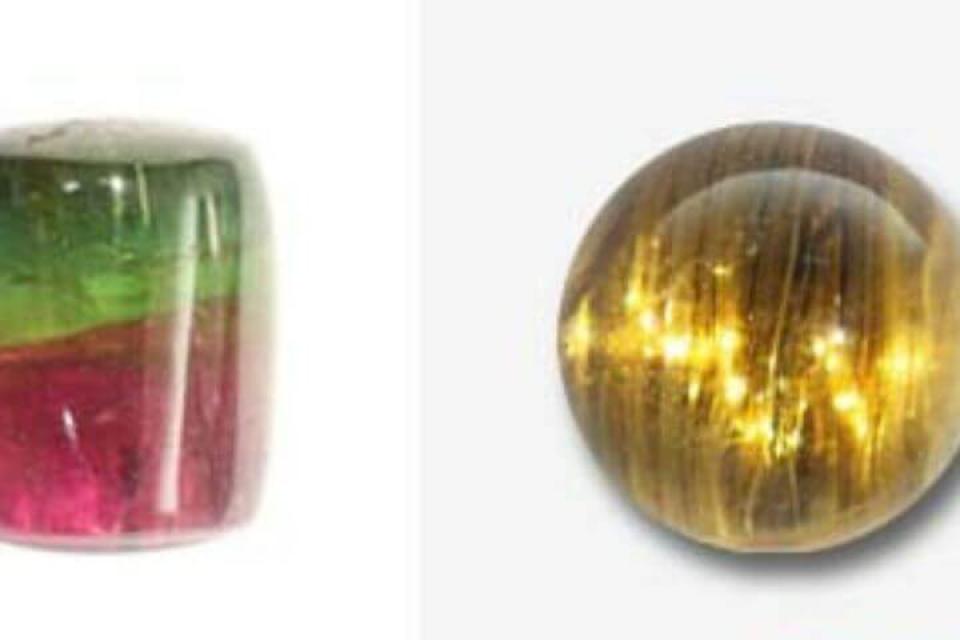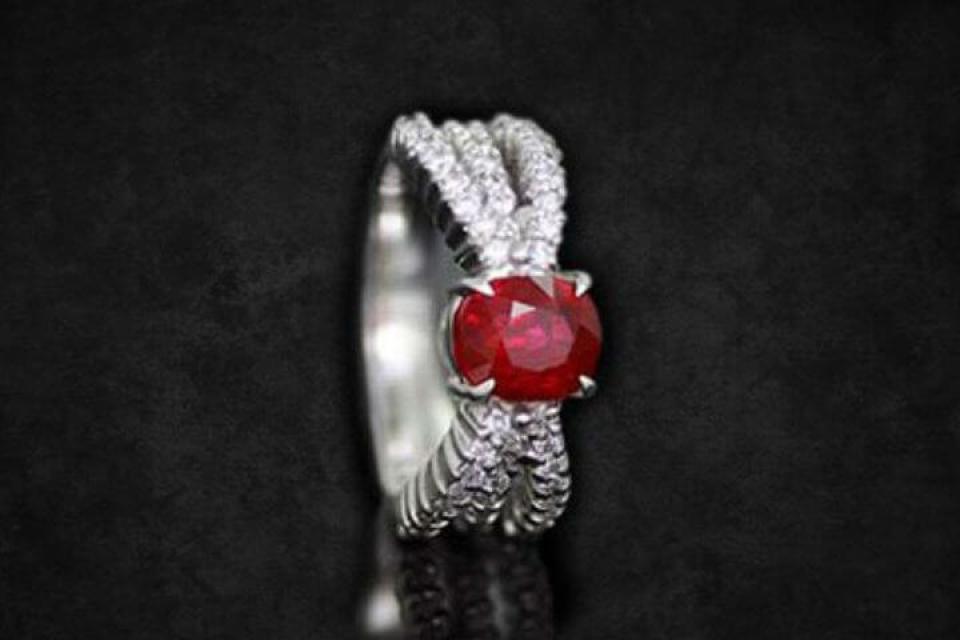Opaque or almost opaque gemstones are stones that allow no light or very little light to pass through them, hence giving them that solid colour appearance. Below is a list of 10 opaque gemstones from the Gem Museum Singapore collection that have been classified into three broad categories: Single Crystal; Polycrystalline; and Organic.
SINGLE CRYSTAL
A Single Crystal (Monocrystalline) gemstone is one in which the crystal lattice is continuous and unbroken to the edges, with no grain boundaries.
Black Diamond
Most black diamonds are either man-made, treated by radiation or high temperature to give it its colour. However, natural black diamonds are not treated, but are typically formed by irregular black masses known as Carbonados. Some studies suggest that black diamonds are the product of cosmic collisions. Scientists are bewildered when it comes to determining the age of this material, with some dating it as far back as 4 billion years old. This rare natural occurrence make black diamonds valuable and highly sought after by private collectors.
Black Tourmaline (Schorl)
One of the reasons why black tourmaline or Schorl appears black is because of ferrous Iron. The way it is formed naturally makes it opaque. In Japan, Schorl is used for sports bands; water ionization and ion beds. It is believed by some that ionized water is a strong source of anti-oxidants since it contains an abundance of free electrons which can be donated to the body in order to neutralize free radicals. Similarly, more people around the world are starting to accept the apparent health benefits of sports bands and ion beds.
Garnet
Garnets typically come in colours ranging from a deep red or dark brown to black. It is a hard gemstone that is resistant to scratches. Garnets possess similar physical properties and crystal forms, but differ in chemical composition. It has a high refractive index which makes it appear shiny. The star garnet is a rare form of garnet displaying a 4 or 6 ray star. It can only be found in India and Idaho, USA.
POLYCRYSTALLINE
A Polycrystalline gemstone is one in which there is more than one crystal present and the crystals are variously oriented throughout.
Jade
Jade, or yu, as it is called in China, is strictly speaking a generic term for two different gems, Nephrite and Jadeite. The familiar green colour in Jade is caused by the presence of Chromium and Iron. Jade that has a more brownish colour will have a greater concentration of Iron. White Jade is very pure, with no other impurities or colouring elements.
Opal
The Opal is the national gemstone of Australia. It has an amorphous character, thus earning it a classification as a mineraloid. The internal structure of precious Opal makes it diffract light; depending on the conditions in which it formed, it can take on many colors. Precious Opal ranges from clear through white, gray, red, orange, yellow, green, blue, magenta, rose, pink, slate, olive, brown, and black. Of these hues, the black opals are the rarest, whereas white and greens are the most common. It varies in optical density from opaque to semitransparent.
Turquoise
Turquoise is an opaque, blue-to-green mineral that is a hydrated phosphate of Copper and Aluminium. It is rare and valuable in finer grades and has been prized as a gem and ornamental stone for thousands of years owing to its unique hue. Commonly found in jewellery and ornaments, Turquoise is but one of the few minerals besides Silver and Gold that has earned a common colour name as the gemstone it shares.
Nephrite
Nephrite can be found in a translucent white to very light yellow form, which is known in China as “mutton fat” Jade; in an opaque white to very light brown or gray which is known as “chicken bone” Jade; as well as in a variety of green colors. For the prized “mutton fat” variety, the white colour is used to symbolize purity in Chinese culture.
Jasper
Jasper, an aggregate of microgranular Quartz and/or Chalcedony and other mineral phases, is an opaque, impure variety of silica, usually red, yellow, brown or green in color; and rarely blue. The common red color is due to iron inclusions. The mineral aggregate breaks with a smooth surface and is used for ornamentation or as a gemstone. “Picture Jaspers” exhibit combinations of patterns - banding from flow or depositional patterns (from water or wind), dendritic or color variations - resulting in what appear to be scenes or images, on a cut section.
Lapis Lazuli
Lapis Lazuli is a deep blue gemstone prized since antiquity for its intense colour. It was used for the eyebrows, among other features, on the funeral mask of the Ancient Egyptian Pharaoh, Tutankhamun. At the end of the Middle Ages, Lapis Lazuli began to be exported to Europe, where it was ground into powder and made into Ultramarine, the finest and most expensive of all blue pigments. It was used by some of the most important artists of the Renaissance and Baroque, and was often reserved for the clothing of the central figures of their paintings, especially the Virgin Mary.
ORGANIC
Although most gemstones are mineral materials, a number of organic materials are also considered to be gemstones. Pearl is one such gemstone where the material, produced by organisms, has been sourced and used for jewellery and ornaments.
Pearl
Pearls are classified as organic gemstones as they do not require any polishing or cutting. The beauty of a pearl is best appreciated in its natural shine and lustre. Most pearls used in jewellery are cultivated in farms to achieve the desired spherical shape. On the other hand, natural pearls are not as appealing to the eye due to their irregular shape. The colour of a pearl is determined by the species of the mollusk. Pearl colours typically range from black to white; silver to gold. One of the most treasured natural pearl is the pink conch pearl, which comes from the Queen Conch.
The Gem Museum is an educational initiative by Far East Gem institute. It is the first and most comprehensive gems and minerals museum in Singapore. Located in the centre of the arts and museum district, The Gem Museum showcases gemstones and minerals from all around the world in six main categories: Crystal systems, Organic gemstones, Phenomenal Gemstones, Rare Gemstones, Imitation and Synthetic gemstones
Brought To You By Expat Choice



